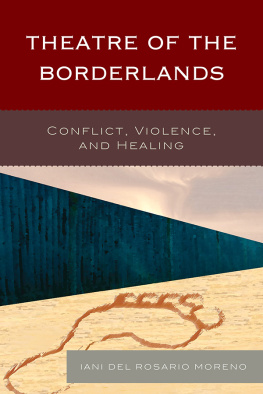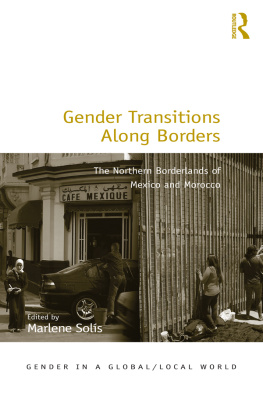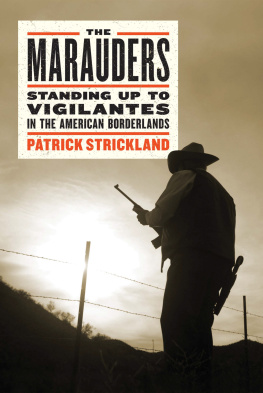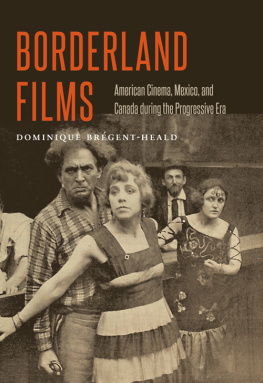Theatre of the Borderlands
Theatre of the Borderlands
Conflict, Violence, and Healing
Iani del Rosario Moreno
LEXINGTON BOOKS
Lanham Boulder New York London
Published by Lexington Books
An imprint of The Rowman & Littlefield Publishing Group, Inc.
4501 Forbes Boulevard, Suite 200, Lanham, Maryland 20706
www.rowman.com
Unit A, Whitacre Mews, 26-34 Stannary Street, London SE11 4AB
Copyright 2015 by Lexington Books
All rights reserved . No part of this book may be reproduced in any form or by any electronic or mechanical means, including information storage and retrieval systems, without written permission from the publisher, except by a reviewer who may quote passages in a review.
British Library Cataloguing in Publication Information Available
Library of Congress Cataloging-in-Publication Data
Moreno, Iani del Rosario.
Theatre of the borderlands : conflict, violence, and healing / by Iani del Rosario Moreno.
pages cm
Includes bibliographical references and index.
ISBN 978-0-7391-6866-0 (hardback) ISBN 978-0-7391-6867-7 (electronic) 1. Mexican dramaMexican-American Border RegionHistory and criticism. 2. Mexican drama20th centuryHistory and criticism. 3. Mexican-American Border RegionIn literature. 4. Violence in literature. I. Title.
PQ7291.M46M68 2015
860.9'9721dc23
2015011622
 The paper used in this publication meets the minimum requirements of American National Standard for Information SciencesPermanence of Paper for Printed Library Materials, ANSI/NISO Z39.48-1992.
The paper used in this publication meets the minimum requirements of American National Standard for Information SciencesPermanence of Paper for Printed Library Materials, ANSI/NISO Z39.48-1992.
Printed in the United States of America
This book is dedicated to Misha and Smyla,
my loyal companions who spent entire nights and days by my side while I worked on this project
Acknowledgments
I would like to express my deepest gratitude to the people who have supported me over the years in this journey and believed in this projects potential. The Dramatists of the north of Mexico were very humble and giving. I wish to thank Hugo Salcedo, Enrique Mijares, Manuel Talavera Trejo, Medardo Trevio, Antonio Ziga, Demetrio vila, Larisa Lpez, Leticia Lpez Snchez, Jorge Celaya, and Alejandro Romn for welcoming me into their worlds and enlightening me about the Borderlands. Their plays not only fascinate me but also make me think, question, and dream. Now it is my turn to introduce the Border, its people, and surroundings to a new set of readers.
In Mexico I wish to thank: Roco Galicia, friend and fellow researcher of the Teatro del norte , for sharing her enthusiasm and materials and for opening her personal library to me. Francisco Flix Berumen of the COLEF and Armando Partida Tayzan of UNAM were very generous of their time and granted me interviews. Rodolfo lvarez Leyva, General director of Centro Cultural Alborada of Tijuana, opened his space, his city, and enthusiasm for Teatro del norte and Border arts to me.
I am forever indebted to Suffolk University and its students for having believed in and supported me on this project and to Lexington Books. I won the Summer Stipend Award in 2008, allowing me to travel to northern Mexico and Mexico City, to conduct thirteen interviews with the most important dramatists of Teatro del Norte and to acquire the primary material for this book. In the fall of 2010, I was given a one-course release allowing me time to write and further research the book. Additionally, I applied and was granted several research assistantship awards over the years. My research assistants openhandedly gave their time and enthusiasm to the project and were invaluable: Denitza Georgieva, Blair Balchunas, Janet Girardot, Brian Contreras, Susana Madrigal, and Kristen Adams worked tirelessly.
In the United States I wish to acknowledge the help provided by many people who read chapters of my manuscript: Cynthia Goldzman, Elliot Gabriel, Daniel Judson, Carlos Humberto Moreno Pineda, Colleen Rua, Camille Weiss, James Weiss, Tom Illingworth, Stephen Thompson, thank you for paying attention to detail. My special thanks are extended to the staff of the Interlibrary Loan office at The Mildred F. Sawyer Library at Suffolk University, thank you ordering so many books and articles for me over the years, and to Bonnie Besdin and the rest of the staff at the Suffolk University Second Language Center. Shoshana Madmoni-Gerber helped me formulate initial ideas of the project. Chris Dakin formatted the entire manuscript. Lenin Tejeda created the painting for the cover page; it is beautiful. Thank you to Camille and James Weiss, Colleen Rua, and Stephen Thompson for suggestions for titles of the chapters as well as the book title. A special thank-you to Stuart Day, Kirsten Nigro, Gail Bulman, and Jacqueline Bixler for your support over the years and for promoting Latin American Theatre in the United States, and to my colleagues in the World Languages & Cultural Studies Department at Suffolk University. I wish to express my gratitude to the late George Woodyard. He was my mentor and friend. He educated and inspired my new love for Latin American Theatre. He was involved in this project from the beginning and gave me sound advice. I just wish he had been able to see this book completed.
I want to thank my parents and sisters for supporting me over the years. I wish to include a special thanks to my husband Mark Rasmussen. He has been with me in every step of the project. Thank you for reading all the chapters, providing valuable suggestions and criticism, and for letting me talk about the world of the Borderlands for hours.
Introduction
The culture and history of the Border region between the United States and Mexico and the work of Hugo Salcedo and other dramatists focusing on this topic have fueled my imagination and research over the years. Salcedo was the young Mexican dramatist who was internationally recognized for having just won Spains Tirso de Molina Award for best Spanish-language play of the year. In the mid-1990s, I met Salcedo and created an academic friendship that provided me unrestricted access to the author and his plays. I have had the privilege of analyzing, directing, and staging some of his works. Through Salcedo, I learned of the theatrical phenomenon described as Teatro del Norte and was introduced to other important dramatists of northern Mexico: Enrique Mijares, Manuel Talavera Trejo, Medardo Trevio, Antonio Ziga, and Vctor Hugo Rascn Banda, among others. They live in different Border states of what is called the Frontera Norte and are actively writing, producing, staging, directing, publishing, and teaching theater. In the years 2000, 2006, 2008, and 2012, I received invitations to be the keynote speaker at conferences about theater in the Borderlands, organized in Northern Mexican states. These visits enlightened me to the relationship between the Borderlands and its dramatists on both sides of the Border and made their world come to life in front of my eyes.
In the spring semester of 2007, I was asked to teach a senior seminar at Suffolk University. I proposed a course that would introduce undergraduate students to the United States-Mexican Border region and the most important Mexican dramatists living and writing about the Borderlands. My course was titled The United States-Mexico Periphery: Border Theatre in the New Millennium. The response from the students enrolled in the course was very enthusiastic. The students suggested that this course be required of all Spanish majors and minors. Encouraged by the positive student reactions, I offered the course again in the fall of 2009. Both courses and class discussions helped me plan how to expand my project into a book.
The history of the Borderlands began with the signing of the Treaty of Guadalupe Hidalgo in 1848, when the Border region was divided into the Southern Border and the Frontera Norte , making residents of the Southern Border U.S. citizens and those of the Frontera Norte Mexican citizens. The inhabitants of this region have more in common as a people than with the rest of their respective countries because of a shared geography, history, economy, and culture. Arguably, the approximate twenty-four million inhabitants of this region, which covers an area of 157,600 square miles and extends for 1,954 miles, comprise a society with a unique history and culture. The dramatists of La Frontera del Norte write about a theater that internalizes this unique history, with its inhospitable geography, expansive territories, and lack of communication and support from the rest of Mexico, which left the region to chart its own cultural and philosophical course. The dramatists evoke this isolation in their productions, particularly those dealing with the indigenous peoples, border crossings, heroes and folk saints, the Border metropolises of Tijuana and Jurez, and the violence of this communal strip.
Next page








 The paper used in this publication meets the minimum requirements of American National Standard for Information SciencesPermanence of Paper for Printed Library Materials, ANSI/NISO Z39.48-1992.
The paper used in this publication meets the minimum requirements of American National Standard for Information SciencesPermanence of Paper for Printed Library Materials, ANSI/NISO Z39.48-1992.